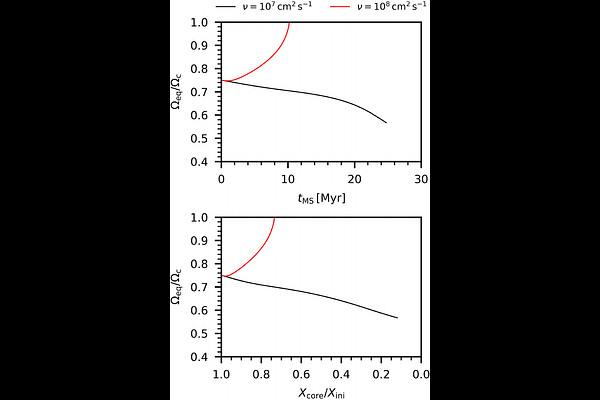Angular momentum relaxation in models of rotating early-type stars

Angular momentum relaxation in models of rotating early-type stars
Michel Rieutord, Enzo Enzo Brossier-Sécher, Joey Mombarg
AbstractThe rotational evolution of stars is still an open question of stellar physics because of the numerous phenomena that can contribute to the distribution of angular momentum. This paper aims at determining the time scale over which a rotating early-type star relaxes to a steady baroclinic state or, equivalently, in which case its nuclear evolution is slow enough to let the evolution of the star be modelled by a series of quasi-steady states. We investigate the damping time scale of baroclinic and viscous eigenmodes that are potentially excited by the continuous forcing of nuclear evolution. We first investigate this problem with a spherical Boussinesq model. Since much of the dynamics is concentrated in the radiative envelope of the star, we then improve the realism of the modelling by using a polytropic model of the envelope that takes into account a realistic density profile. The polytropic model of the envelope underlines the key role of the region at the core-envelope interface. The results of evolutionary models recently obtained with two-dimensional axisymmetric ESTER models turn out to be a consequence of the slow damping of viscous modes. Using a vanishing Prandtl number appears to be too strong an approximation to explain the dynamics of the models. Baroclinic modes previously thought as good candidates of this relaxation process turn out to be too quickly damped. The dynamical response of rotating stars to the slow forcing of its nuclear evolution appears as a complex combination of non-oscillating eigenmodes. Simple Boussinesq approach are not realistic enough to explain this reality. The present work underlines the key role of layers near the core-envelope interface in an early-type star and also the key role of any angular momentum transport mechanism, here played by viscosity, for early-type stars to reach critical rotation, presumably associated with the Be phenomenon.